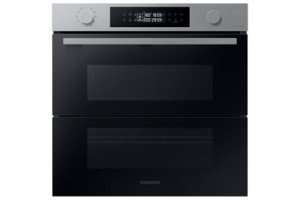The Top 5 Reasons People Thrive In The Integrated Electric Oven Industry
The Rise of Integrated Electric Ovens: A Comprehensive Guide
Integrated electric ovens are becoming increasingly popular in modern-day kitchen areas due to their sleek design, energy performance, and advanced cooking features. Designed to mix seamlessly with kitchen cabinetry, these appliances not just improve looks but also provide a range of functionalities that deal with the cooking requirements of modern families. best integrated oven will look into the advantages of integrated electric ovens, how they compare to standard ovens, and crucial elements to consider when purchasing one.
What is an Integrated Electric Oven?
An integrated electric oven is developed to be built into kitchen cabinetry, offering a streamlined look that maximizes area efficiency. Unlike freestanding ovens, integrated models often feature a flush fit with cabinets and feature designs that can match or complement the surrounding kitchen decor. These ovens normally feature a wide range of performances, including convection cooking, self-cleaning options, and smart innovation functions.
Benefits of Integrated Electric Ovens
The appeal of integrated electric ovens lies in their various advantages. Below are some of the essential benefits:
Aesthetic Appeal
- Integrated ovens provide a clean and contemporary look.
- They can be customized to match the kitchen's cabinetry and design theme.
Space Efficiency
- Developed to take full advantage of the available kitchen area.
- Ideal for smaller sized kitchen areas where freestanding designs might be troublesome.
Advanced Cooking Features
- Lots of models include functions such as convection heat, steam cooking, and multiple cooking modes.
- Smart ovens can even connect to Wi-Fi for remote monitoring and control.
Energy Efficiency
- Electric ovens frequently supply more constant heating and faster cooking times compared to gas ovens.
- More recent designs are created with energy-saving innovations, which can assist minimize energy bills.
Improved Safety
- Integrated ovens typically consist of features such as auto shut-off and kid lock functions for included security.
Table 1: Comparison of Integrated Electric Ovens and Traditional Ovens
Feature
Integrated Electric Oven
Standard Oven
Style
Built-in, flush-fitting
Freestanding, uses up more space
Cooking Efficiency
Generally quicker, more even heating up
Varies, usually longer heat up
Aesthetic Integration
Smooth with kitchen cabinetry
Standout device
Space Usage
Space-saving
Needs more floor area
Advanced Features
Often includes clever technologies
Limited technological combination
Energy Efficiency
Generally more energy-efficient
Can differ by model
Key Features to Look For in Integrated Electric Ovens
When looking for an integrated electric oven, different features must be taken into consideration to ensure you pick a design that fits your cooking design and choices. Here are some key features to consider:
Size and Capacity
- Look for ovens that fit within your kitchen cabinetry and assess internal capability based on your cooking needs.
Cooking Modes
- Consider models that provide numerous cooking functions consisting of bake, broil, steam, and convection to expand culinary possibilities.
Self-Cleaning Options
- Self-cleaning modes save time and effort in preserving the oven.
Control Options
- Touchscreen manages or clever tech integration for remote gain access to can include benefit to cooking.
Energy Rating
- Choose energy-efficient models with great rankings to guarantee lower operating costs.
Warranty and Support
- Examine for service warranties to cover repair work and replacements and the availability of client service.
Frequently asked questions
Q1: What makes integrated electric ovens various from built-in ovens?
A1: Integrated electric ovens are particularly designed to mix into cabinets, using a seamless visual, while built-in ovens might not necessarily have the same flush style and often stand out more as private appliances.
Q2: Are integrated electric ovens more pricey than conventional ovens?
A2: Generally, integrated electric ovens can be more expensive due to their style and advanced functions. Nevertheless, the long-term energy savings and improved performance often balance out the initial expense.
Q3: How do I guarantee correct setup of an integrated electric oven?
A3: It is recommended to employ a professional for installation, as integrated ovens need precise measurements and can involve electrical connections that must abide by local building regulations.
Q4: Can I tailor the appearance of my integrated electric oven?
A4: Yes, many manufacturers offer customizable panels or surfaces to match your kitchen cabinets, permitting a fully integrated appearance.
Q5: What upkeep does an integrated electric oven usually need?
A5: Regular cleaning, especially after heavy usage, and inspecting seals and vents for wear are suggested to maintain the oven's performance and look.
In conclusion, integrated electric ovens are a useful and stylish addition to contemporary kitchens. Their advantages consist of visual appeal, energy performance, and advanced cooking functions, making them a popular choice for home cooks. Comprehending the crucial characteristics and comparing different designs can help consumers make informed getting decisions and pick an integrated oven that best suits their cooking requirements and kitchen design. With their smooth integration and technological developments, these ovens are poised to become staples in the kitchen for years to come.
